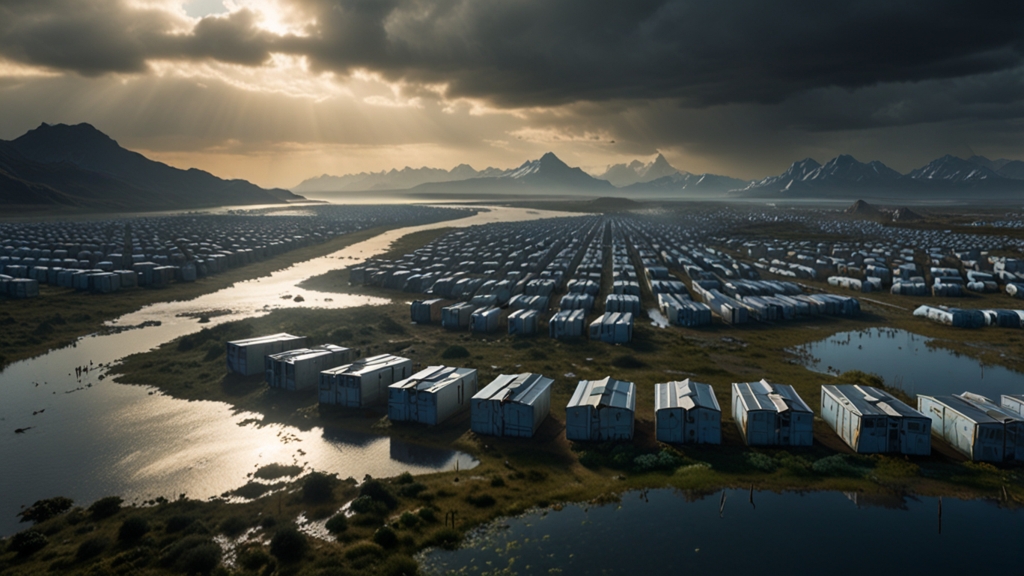Earth's Future: The Science Behind Climate Refugees
The phenomenon of climate refugees is rapidly becoming one of the most pressing issues of our time. As the planet grapples with the multifaceted impacts of climate change, millions of people are being forced to leave their homes in search of safety and stability. This article delves into the science behind climate refugees, exploring the driving factors and the potential future we face if substantial action is not taken.
Understanding Climate Refugees
Climate refugees, also known as environmental migrants, are individuals who are compelled to relocate due to the adverse effects of climate change. Unlike traditional refugees who flee war or political persecution, climate refugees are uprooted by environmental factors such as rising sea levels, extreme weather events, and prolonged droughts. The United Nations High Commissioner for Refugees (UNHCR) has highlighted that climate change acts as a "threat multiplier," exacerbating existing vulnerabilities and forcing people to seek refuge elsewhere.
The Science of Climate Change and Migration
Climate change impacts migration patterns through a combination of direct and indirect mechanisms. Direct impacts include natural disasters like hurricanes, floods, and wildfires that destroy homes and infrastructure. Indirect impacts encompass more gradual changes, such as prolonged droughts and desertification, which undermine agricultural productivity and lead to food and water shortages. These environmental stressors intensify competition for resources, destabilize economies, and contribute to social unrest, all of which drive people to migrate.
Sea Level Rise and Coastal Displacement
One of the most significant factors contributing to climate-induced displacement is sea level rise. According to the Intergovernmental Panel on Climate Change (IPCC), global sea levels are projected to rise between 0.3 to 1 meter by the end of this century. Low-lying coastal areas and small island nations are particularly vulnerable to these changes. For instance, the island nation of Kiribati is already witnessing the inundation of its land, prompting the government to purchase land in Fiji as a potential resettlement option for its citizens.
"We are now staring down the barrel of climate migration on a previously unseen scale. Our challenge is to recognize it for the tragedy it is and to marshal the resources to help." - António Guterres, UN Secretary-General
Extreme Weather Events and Displacement
Extreme weather events are becoming more frequent and severe as a result of climate change. Hurricanes, cyclones, and typhoons, fueled by warmer ocean temperatures, wreak havoc on coastal regions. In 2017, Hurricane Maria devastated Puerto Rico, displacing thousands of residents and highlighting the link between climate change and forced migration. Similarly, prolonged droughts in Africa and the Middle East have led to significant displacement, as people can no longer sustain their agricultural livelihoods.
The Humanitarian and Policy Response
The growing number of climate refugees presents a complex humanitarian challenge. Current international frameworks, such as the 1951 Refugee Convention, do not explicitly recognize climate refugees, creating a gap in legal protection. Efforts are underway to address this issue. For example, the Global Compact for Safe, Orderly, and Regular Migration, adopted by the United Nations in 2018, acknowledges environmental drivers of migration and calls for enhanced cooperation and support for affected communities.
"Our current systems are ill-equipped to handle the impending surge in climate-induced displacement. Global cooperation and innovative policies are essential to address the needs of climate refugees and ensure their rights and dignity." - Filippo Grandi, UN High Commissioner for Refugees
A Call to Action
Addressing the root causes of climate-induced displacement requires urgent and coordinated action at multiple levels. Mitigating climate change through reduced greenhouse gas emissions is paramount in slowing the pace of environmental degradation. Additionally, investing in climate resilience and adaptation strategies can help vulnerable communities withstand the impacts of climate change. Finally, there is a need to develop comprehensive legal and policy frameworks that recognize and protect the rights of climate refugees.
Conclusion
The future of our planet and the well-being of millions hinge on our collective response to climate change and its associated displacement. By understanding the science behind climate refugees and working towards sustainable solutions, we can create a future where people are not forced to flee their homes due to environmental crises. The time to act is now, for the sake of our shared global future.
"Climate change is the defining issue of our time, and climate refugees are the human face of this crisis. Our response will determine the future of humanity and the health of our planet." - Mary Robinson, Former President of Ireland and Climate Justice Advocate









